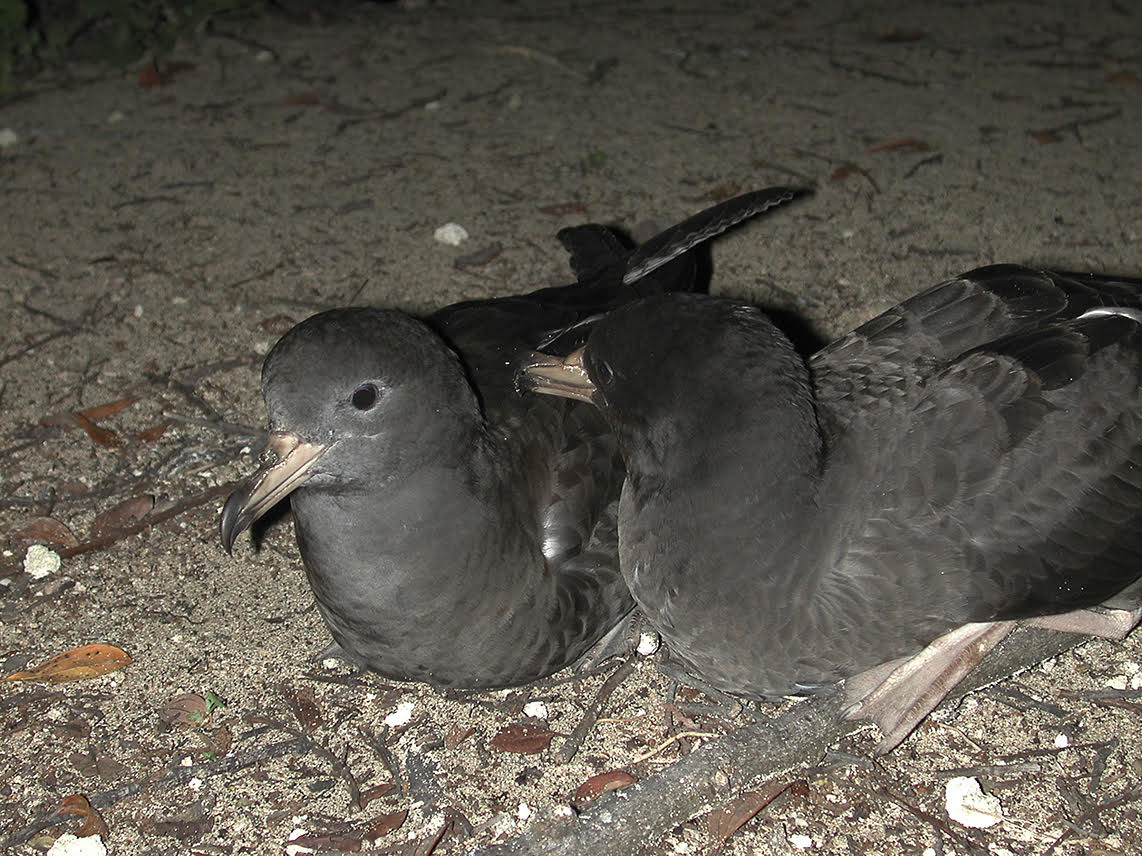 Flesh-footed Shearwaters; photograph by Ian Hutton
Flesh-footed Shearwaters; photograph by Ian Hutton
J. L. Lavers (Bird Group, The Natural History Museum, Tring, UK) and A.L. Bond have published open access in the journal Marine Biology a study on the ingestion of pumice in Flesh-footed and Wedge-tailed Shearwaters between 2011 – 2022 and connections with the ingestion of plastics and chick development.
The paper’s abstract follows,
“Many species of seabird ingest or are provisioned with pumice stones, buoyant volcanic rocks that are thought to aide in digestion, occasionally during times of poor prey availability. Unlike other indigestible matter, like plastics, the effect of pumice on chick growth, its relationship with ingested plastics, and variation among years has not yet been examined. We analysed the amount of ingested pumice from 739 Flesh-footed (Ardenna carneipes) and 173 Wedge-tailed Shearwaters (A. pacifica) from Lord Howe Island, Australia sampled using stomach lavage between 2011 and 2022. The total mass of ingested pumice was positively related to the mass of ingested plastics in Flesh-footed, but not Wedge-tailed Shearwaters, but not when using mean stone mass. Pumice mass did not vary over time, except for one higher year for each species (2016 for Flesh-footed Shearwaters and 2014 for Wedge-tailed Shearwaters), and there was no effect of pumice mass on chick body size at fledgling. Our results are consistent with the coexistence over geological time of seabirds and floating pumice, and future work should focus on aspects of retention in the digestive system and potential interactions with and efficacy in the presence of novel materials, like plastics.”
Reference
Lavers, J.L., Bond, A.L. 2023. Pumice ingestion in seabirds: interannual variation, and relationships with chick growth and plastic ingestion. Marine Biology 170, 55 https://doi.org/10.1007/s00227-023-04203-6
24 April 2023

 English
English  Français
Français  Español
Español